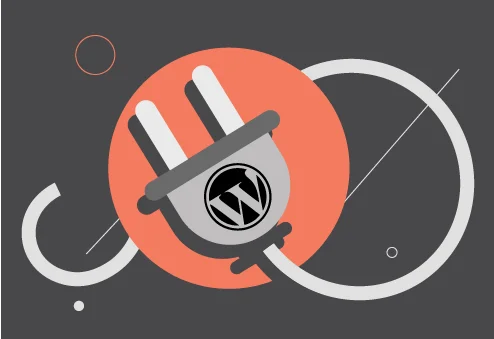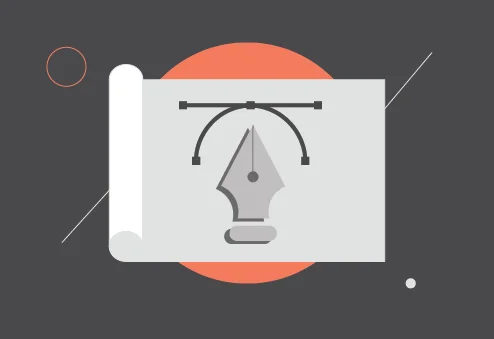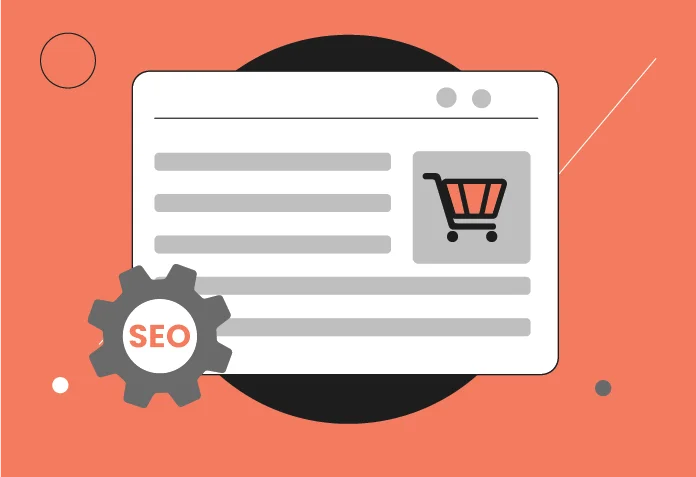Let’s discover the Importance of Email Outreach in E-commerce. Email outreach remains one of the most powerful tools for e-commerce businesses to engage customers and drive conversions. While social media and paid advertising receive a lot of attention, email marketing still stands strong with its ability to directly reach consumers with personalized content and offers. Email offers an impressive ROI, providing businesses with an estimated $42 return for every $1 spent, making it an essential part of any e-commerce strategy.
This blog explores the importance of email outreach, with key insights and strategies to enhance your e-commerce success. Including the use of email templates for eCommerce, that help optimize this process.
Why Email Outreach is Key for E-commerce

Email outreach involves sending targeted messages to existing and potential customers to encourage actions such as making purchases, engaging with content, or subscribing to newsletters. Its strength lies in its ability to deliver personalized, timely, and relevant messages directly to a user’s inbox, where they are more likely to engage.
Unlike social media posts that are often missed in an oversaturated feed, email outreach enables businesses to have more control over who sees their content. With email, you can build personalized campaigns that cater to your customer’s preferences and buying habits. Whether it’s welcoming a new subscriber, recovering abandoned carts, or sending out exclusive offers, the possibilities with email are endless. To make your campaigns even more effective, tapping into LinkedIn and similar platforms for verified contacts can sharpen targeting and help build a more qualified email list.
Key stat: Emails with personalized subject lines are 26% more likely to be opened—highlighting the importance of targeted messaging.
Email Outreach Strategy
1. Building and Segmenting Your Email List
Before jumping into sending emails, having a well-segmented email list is crucial. A broad, general list that includes all customers without segmentation won’t yield the best results. Use an email verifier to ensure accuracy, then divide your list into segments based on customer behaviors, preferences, and interactions with your site. Complement these efforts with an SPF generator to enhance email infrastructure protection. This approach helps you send targeted, relevant content that better resonates with each group.
For instance, segment your email lists into:
- First-time buyers: Send them special welcome offers.
- Loyal customers: Reward them with exclusive promotions.
- Abandoned cart users: Encourage them to complete their purchases by sending reminders.
This tailored approach ensures that your messaging remains relevant to each group, leading to increased open rates and conversions. MX lookup helps verify email addresses and maintain the accuracy of your contact list for better deliverability.
Pro Tip: Segmenting your audience increases revenue by up to 760%.
2. Personalization and Dynamic Content
One of the biggest advantages of email marketing is the ability to personalize each message based on individual customer data. From addressing recipients by their names to recommending products based on their past purchases, personalized emails create a stronger connection with your audience. Creating a personalized email signature also helps reinforce your brand identity and leave a lasting impression on your recipients.
Utilize dynamic content to make emails even more engaging. With dynamic content, different sections of your email change based on the recipient’s preferences, such as product recommendations, content offers, or exclusive discounts.
For example, a fashion e-commerce site can send product recommendations based on a user’s browsing or purchase history. Efficient inventory management is crucial for ensuring timely product recommendations based on user behavior. Similarly, a customer in one region might receive content about a promotion happening at their nearest store, while customers in another region get details about different offers.
3. Automation: For Modernized Email Campaigns
Automation tools can significantly enhance your email outreach efforts can significantly enhance your email outreach efforts. Automating emails ensures that the right message is sent to the right person at the right time, without requiring manual intervention.
Some common examples of automation in e-commerce include:
- Welcome email series: Automate a series of emails when someone first subscribes to your mailing list.
- Cart abandonment emails: Automatically send reminders to users who leave items in their shopping carts.
- Post-purchase follow-up: Send emails thanking customers for their purchase, asking for reviews, or recommending complementary products. By leveraging AI in e-commerce, businesses can streamline inventory management and enhance supply chain efficiency.
- Email automation platform: By using an email automation platform, businesses can set up these workflows with ease, ensuring consistent communication and better engagement.
For advanced automation strategies, check out email templates for eCommerce, which can guide your process and help streamline workflows.
4. Leveraging Customer Retention through Email
Customer retention is just as important as acquiring new customers. In fact, it’s cheaper to retain existing customers than to attract new ones, and email outreach plays a crucial role in keeping your customers engaged and loyal to your brand. Another thing you should do is implement a warehouse management system to streamline operations and ensure timely delivery to your loyal customers. Another thing you should do is implement a warehouse management system to streamline operations, ensure timely delivery to your loyal customers, and optimize delivery routes for greater efficiency.
Retain customers by sending personalized post-purchase follow-ups, exclusive discounts, and early access to sales. Retain customers by sending personalized post-purchase follow-ups, exclusive discounts, and early access to sales—then reinforce these with a smart resend alternative to increase visibility. You can also use email to offer loyalty programs or refer-a-friend promotions, both of which incentivize repeat purchases. To make your email outreach even more efficient, consider using an email generator. These tools help you craft personalized, professional-looking emails at scale—saving time while maintaining a human touch. With the right settings, an email generator can segment your audience, adjust tone, and tailor content based on purchase history or customer behavior, making your retention efforts more effective and consistent.
Key stat: A 5% increase in customer retention can lead to a profit increase of up to 95%.
5. Mobile Optimization: Ensuring Accessibility
With a significant number of consumers checking their emails on mobile devices, it is critical to optimize your email campaigns for mobile. A poorly formatted email on a smartphone can lead to frustration and result in missed opportunities. Ensure that your email templates are responsive, with easy-to-read fonts, buttons, and images that load quickly.
Here are a few mobile-friendly design tips:
- Short subject lines: Keep your subject lines concise to capture attention.
- Scannable content: Use bullet points, short paragraphs, and strong CTAs.
- Clear CTAs: Ensure that your call-to-action buttons are easily clickable on mobile screens.
6. Measuring the Success of Email Campaigns
To understand how well your email outreach is performing, it’s essential to track key metrics in Outlook or other tools and continually optimize your strategy. Some important metrics to monitor
- Open rates: The percentage of people who open your emails.
- Click-through rates (CTR): The percentage of recipients who click on links or CTAs in your email.
- Conversion rates: The percentage of people who take the desired action, such as making a purchase or subscribing.
Analyze these metrics regularly to determine what’s working and what isn’t. A/B testing, for instance, can help you experiment with different subject lines, email formats, and CTAs to maximize engagement and conversions. Including QR codes in your email campaigns, can further enhance engagement by directing recipients to additional resources or exclusive offers seamlessly. You can easily add a QR code to your email using an email QR code generator.
Pro tip: To run a successful email outreach campaign, you need a reliable email finder. Pick one that provides valid results you can use with confidence.
Benefits Of Email Templates
1. Building and Nurturing Customer Relationships
Email outreach enables e-commerce businesses to directly communicate with their customers, providing a personal touch that other marketing channels may lack. Through targeted emails, businesses can tailor content to suit individual customer preferences, shopping behaviors, and past interactions. For example, welcoming emails for new customers, product recommendations based on past purchases, and cart abandonment reminders help nurture relationships and encourage repeat purchases.
Unlike social media, where algorithms control visibility, emails are delivered straight to a customer’s inbox, offering businesses full control over their messaging. Regular, personalized communication helps build trust and loyalty, which are critical to retaining customers and driving long-term business growth. Including your contact details and social links in your email signature can boost engagement and drive traffic to your online platforms
2. Boosting Sales Through Targeted Campaigns
One of the greatest advantages is the ability to create highly targeted campaigns. By segmenting email lists, businesses can send specific promotions, product launches, and special offers to different customer groups. This level of targeting ensures that the right message reaches the right customer at the right time, increasing the likelihood of conversion. Reliable DKIM checker can help businesses ensure that their email campaigns are authenticated and delivered securely to their intended recipients.
For example, a customer who recently browsed or added items to their cart without completing a purchase can receive a reminder email with a special offer or discount. Such behavior-triggered emails, including abandoned cart reminders, are proven to boost sales and recover potentially lost revenue. Similarly, emails promoting seasonal sales, new product launches, or limited-time discounts can help drive traffic to the website and increase revenue.
3. Cost-Effective Marketing Strategy
Email outreach remains one of the most cost-effective marketing strategies available to e-commerce businesses. Compared to paid advertising channels, which can be expensive, email marketing provides a higher return on investment (ROI) due to its lower cost and ability to reach a wide audience. According to a report by the Data & Marketing Association, the average ROI for email marketing is 4,200%, meaning that businesses can earn $42 for every $1 spent on email marketing.
Additionally, email campaigns are relatively easy to set up and manage, particularly with the use of pre-designed responsive email templates for eCommerce. These templates save time and effort while ensuring a consistent and professional appearance across all communications. These templates save time and effort while ensuring a consistent and professional appearance across all communications. For businesses looking to further optimize their email strategy, a comprehensive guide to transactional emails offers practical tips on crafting clear, timely messages that enhance customer satisfaction and engagement.
4. Driving Traffic to Your E-commerce Website
Email outreach is an excellent way to drive traffic back to your e-commerce website. Whether promoting a new product line, a blog post, or a flash sale, emails can direct customers to specific landing pages or product listings. The key to driving traffic through emails is providing clear, actionable calls-to-action (CTAs) that guide the customer on their next steps. You can also highlight tools that improve the shopping experience, including a barcode scanner, to encourage engagement and clicks.
For example, an email promoting a new collection could include a direct link to the product page, accompanied by a “Shop Now” button. Emails promoting blog content, tutorials, or how-to guides can also drive traffic by offering valuable information that encourages the recipient to visit your site for more details.
Conclusion
Email outreach remains a powerful and cost-effective tool for e-commerce businesses looking to engage customers, boost sales, and drive website traffic. With personalized email marketing, targeted campaigns, and automation tools, businesses can foster strong customer relationships and achieve higher conversion rates. Furthermore, the use of email templates for eCommerce ensures that businesses can create visually appealing, professional emails that resonate with their audience.
To succeed in the competitive e-commerce landscape, businesses must prioritize email outreach as a key component of their marketing strategy. Whether it’s through personalized messaging, automated workflows, or data-driven insights, email marketing continues to deliver impressive results in driving e-commerce growth.





